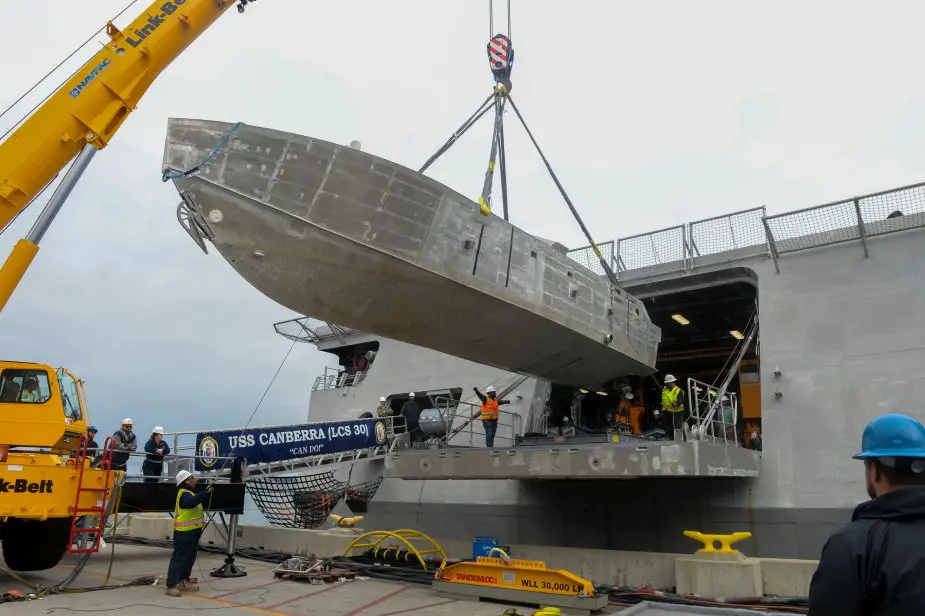Breaking news
US Navy embarks Mine Countermeasures USV on USS Canberra for 1st time.
According to information published by the US DoD on April 25, 2024, an MCM USV (Mine Countermeasures Unmanned Surface Vessel) was recently hoisted aboard the littoral combat ship USS Canberra (LCS 30) in San Diego.
Follow Navy Recognition on Google News at this link
 Mine Countermeasures Unmanned Surface Vessel hoisting aboard the USS Canberra. (Picture source: Dvids)
Mine Countermeasures Unmanned Surface Vessel hoisting aboard the USS Canberra. (Picture source: Dvids)
The Mine Countermeasures Unmanned Surface Vehicle (MCM USV), part of the U.S. Navy's Mine Countermeasures mission package, is a sophisticated system designed for extended mine countermeasure operations from littoral combat ships (LCS) like the USS Canberra. This vessel is semi-autonomous and diesel-powered, made from an all-aluminum surface craft that supports multiple mine countermeasure payloads.
Technical details of the MCM USV include a robust propulsion system, power generation capabilities, comprehensive communication systems linking it to the host ship, radar, optical cameras, and an advanced modular payload system.
This system allows the MCM USV to conduct both minehunting and minesweeping operations, employing different systems for detecting, identifying, and neutralizing mine threats.
The MCM USV employs the AN/AQS-20C sonar system, which includes side-looking sonars, a gap filler sonar, and a forward-looking sonar. These components work together to detect, localize, and classify mines across a wide area in a single pass. The sonar system is particularly adept at providing high-definition images of mines, which are crucial for post-mission analysis and mine identification.
Additionally, the MCM USV has been integrated into operational tests that include the use of the Knifefish Unmanned Undersea Vehicle (UUV) during its testing phases, demonstrating the Navy's approach to modular, multi-vehicle mine countermeasure strategies.
These vessels have undergone rigorous testing, including dual operations of mine hunting and sweeping, to ensure their effectiveness and reliability before being declared operational. The overarching goal is for these systems to enhance the Navy's ability to perform mine countermeasures safely and efficiently, keeping personnel out of harm's way.


























